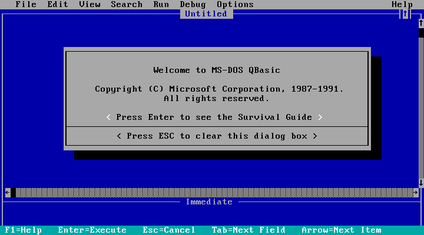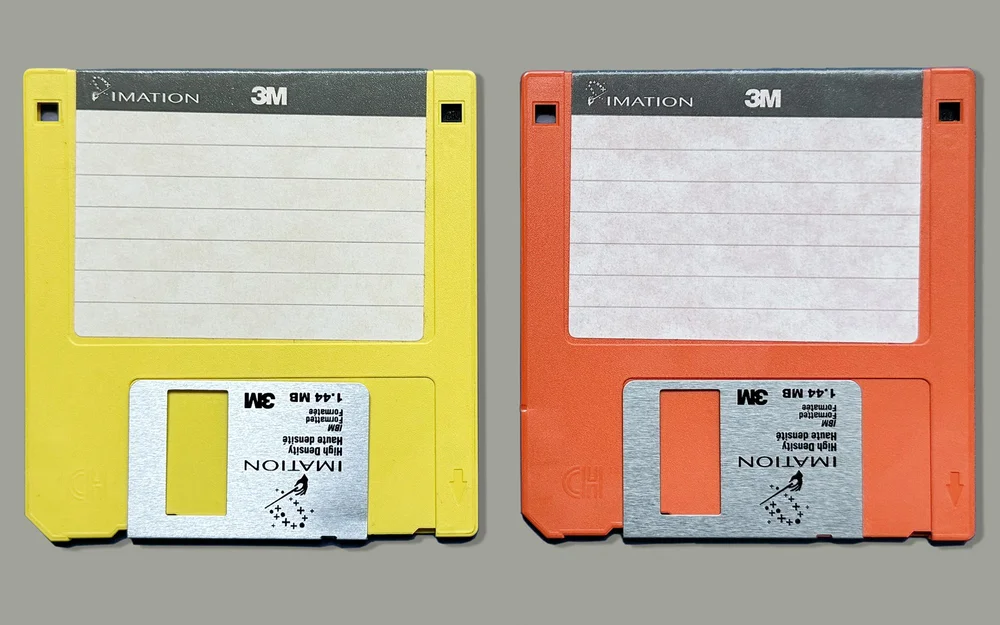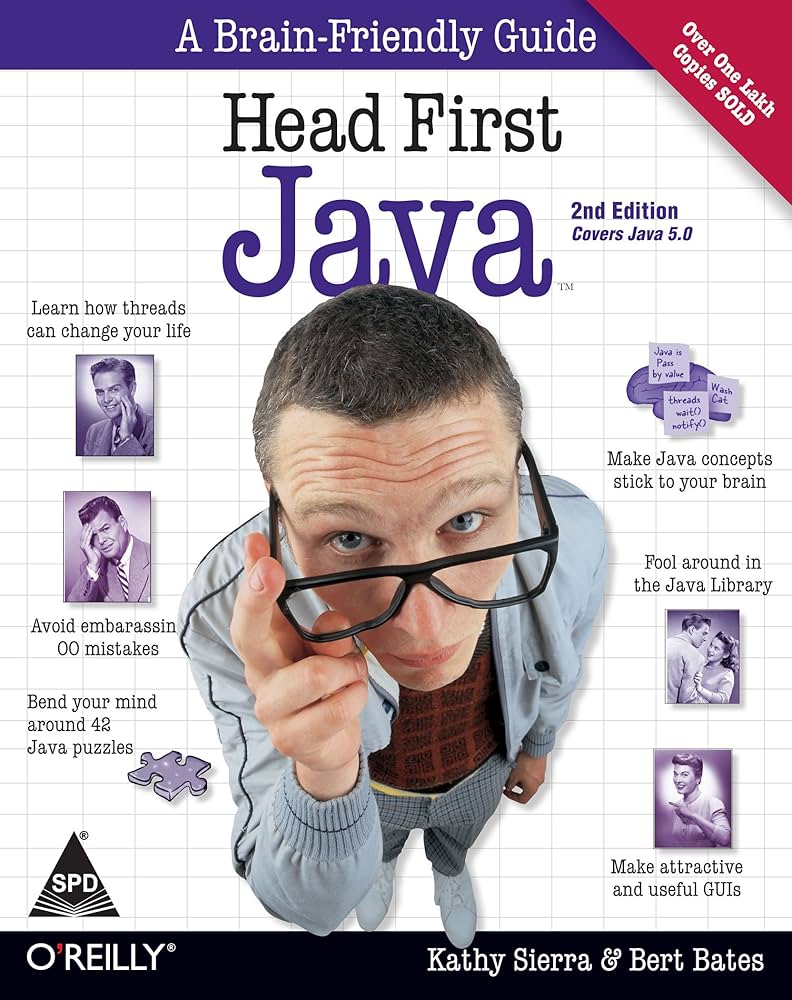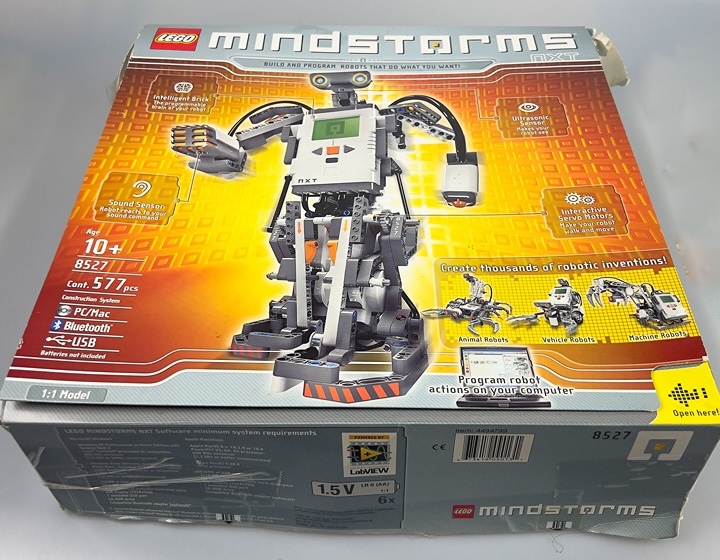
Abhinav Das
AI Expert & Fractional CTO
From coding at 9 to transforming enterprises with AI—the complete journey of building the future, one algorithm at a time.
Early Life & Education
My journey with technology began at age 9 when I wrote my first line of code. It was in a language called Logo, popularly known for the turtle that could be instructed to draw fun graphics. I don't remember too much about this time in my life, but I do remember that there was some unspoken excitement and satisfaction in getting the turtle to draw what you needed it to draw.

Fig: The Logo programming environment
I've been found of computers for as long as I can remember. It was an innate response. They drew me in.
My parents did a tremendous job though they might not realize it or claim any credit. My father would always say "He should become comfortable with tech." Now that I think back to my early years, I vividly recall that my parents were extremely supportive of my crude experimentation. I'd always wanted to know how things worked. Like taking apart a tape recorder, or standing around watching a computer repair person disassemble and work on a PC. Somehow, systematically, my parents and the environment they created, made me truly curious.
In 2004, at school, they taught us BASIC. I was thrilled to "talk" to a computer. It did what you asked it to do! You just had to learn how to talk to it. We uses to use QBasic IDE. My first ever IDE. The interface was white on blue. And it was fabulous.

Fig: QBasic IDE
I was never a "good" student. My grades were always average. My parents tolerated this, as much as Indian parents can. But I was good at computers. I understood computers, and more importantly, computers understood me.
Back then, my father used to work in R&D at IBM. He had this gorgeous black laptop, with a red dot in the middle of the keyboard. An IBM ThinkPad (this was before Lenovo bought the ThinkPad PC division from IBM). Talk about love at first sight.
There was something about this machine. The subtle beauty of its design. The fact that it packed so much power in such a small package. I dreamt about that laptop.
Funnily, this was back in a time and age when we'd regularly buy computer magazines like Chip and PCWorld. I'd read them cover to cover. Not necessarily going into the depth of any one article, but skimming through things, stopping and reading more thouroughly whenever something caught my attention. These magazines had great ads for different kinds of computers. That was probably the first time I came across the term "server". IBM and later, HP, use to list servers for sale in these magazines. The best thing about computer magazines was the CD they'd come with. These CDs had games, utilities and more!
I had a humble PC when I was growing up. A custom build. If I recall correctly, it was a Dell machine that my parents purchased in the US. But its motherboard went bad so we had to replace it with a Mercury motherboard. Eventually, the CPU case was replaced as well, but the original Dell CRT monitor worked great. This beast of a machine would plug into a hefty UPS that would plug into an AC socket. I believe the specs were something like 256MB RAM and 20GB HDD. It had a CD ROM drive and a floppy drive. Later, the CD ROM drive was replaced with a DVD drive.
Those were fun times! We'd have some assignments at school that could be done as PowerPoints. I'd come home, excited to have an excuse to use the computer, and work on a PPT like a sad MBA student. The only difference was, I was in 8th grade. We'd then write these files to a 3.5" 1.4MB floppy disk and take it to school. Floppies were so fun. They had this "shutter" that you could use as a fidget toy! The only problem was, that since floppies used magnetic particles, they were quite succeptible to corruption! So many a time, you'd make a backup and pray that at least one copy survived. Little did I know that this was an early introduction to disaster recovery and management.

Fig: Yellow and orange floppies
I hated computer theory but couldn't wait for labs. Because that's when we'd get to use computers! I wanted to be around computers ALL.. THE.. TIME. I was notorious during my schooling years. I learned about Windows' shutdown -i command and would turn off all computers on my network. Padma ma'am and Vasudha ma'am tolerated my discretions. They were stern, but didn't reprimand me too much. They would always know it was me, but I was quick.
Why I was quick, was because my father had the brilliant idea to teach me proper typing early. He decided that since keyboards are such an important input to computers, I should wield it well, and correctly. Not for speed, but for efficiency. We were traveling to my mother's native town called Gudur, in Andhra Pradesh. I believe it was my aunt's wedding. We were put up in a nice guest house! I thought I'd have a lot of fun, and I was very excited for my aunt, but my dad had other plans. He had installed this software called KiddyType or something like that on his ThinkPad, and made me learn and practice typing. For every mistake, it would say "uh oh" in such an interesting way. That sound is forever burned into my memory.
I think it was the summer of 2006 (I wish it were '69). My parents said they had some urgent and important work, and left me at Rama aunty's house. Rama aunty and her husband, Suryodhayam uncle were my local grandparents. Because my real grandparents all lived so far away. My local grandparents on the other hand, used to live in our society in Bangalore and were the loveliest of people. That day, Rama aunty made an incredible veg pulao paired with a cold vegetable raita. She even gave me some Amul butterscotch ice-cream. Including a second serving! That evening, my parents returned with a surprise. Probably the biggest surprise of my life that far. They had bought a laptop for me. An Acer machine with 1GB RAM and 40GB HDD! It had some Intel chip but was one of the best laptops at that time.
Being a child, I was thrilled, because in my mind, I was thinking "This can run Midtown Madness!" But my dad had a rule. No games! He bought and installed Encyclopedia Britannica on my laptop. Back in 2006, you had to have like 15 read-only DVDs to install the entirety of Britannica. But it was great. The Internet wasn't as commonplace, so there wasn't too much to do on a computer for little kids. Britannica was like my own local copy of Wikipedia. I would spend hours on that thing. Reading about everything I could think of, and using interlinks to go other encycopedia pages to read some more. I would read about jet engines, about mummies, about art, and about so much more. I remember having some kind of children's encyclopedia. Physical books! 5 or so volumes. Thin, with great pages and tons of illustrations! I first came across ideas of astronomy and was introduced to black holes through this set. And then, the digital Britannica on my laptop took it to the next level.
Soon, due to some personal reasons, I would have to yield my laptop to my dad. But I'd get another one, a much more powerful one soon after! Probably the summer of 2007 or so. It was again an Acer. But it was Core 2 Duo (dual processors). A beast of a machine. This laptop was truly my own. And I squeezed it to the maximum.
In 8th grade, my school friend, Kshitij, one of the brightest boys in my class brought a Rubick's cube to school. We had a 3x3 Rubick's cube lying around the house since I was little. I never knew how it worked. I always thought it was a toy that would roll really funny and didn't think it had any purpose. I vaguely remember my father telling me there's a bunch of math involve with making it work. I didn't like math very much, but I was fond of rolling the cube around the house.
Now, Kshitij brought this Funskool 3x3 cube to school. And this little bugger could solve it! That was the first time I saw what a Rubick's cube could do. I didn't know there was a trick, so I tried his cube to see if I could do it intuitively. Most people can probably solve one side intuitively given enough trial and error. But beyond that, its improbable to use intuition. I was thrown off. You think you're solving it, but you're ruining the solve side at the same time. I didn't know there was a trick. I begged him to teach me. He did! He taught a lot of people at school. Kshitij taught me the beginners solution. Or at least he tried. He wrote a bunch of algos down and explained how to do it. We were at our school's annual day event. There was some band of uncles performing some kind of rock music. I didn't care. Kshitij was teaching me how to solve the Rubick's cube.

Fig: Funskool 3x3 Rubick's cube
I think I was able to do it once, in front of him. Because he kept giving me feedback whenever I was messing up. I begged my mom to buy me a Rubick's cube. She was always on my side. She obliged. We went to a store a few blocks away from our society and my mom bought me a Funskool cube. It was the gold standard back then. You had to lubricate it yourself with some coconut oil or some vaseline, as Kshitij would later teach me, and that's what made it a speedcube.
The problem though, was that once I got my own cube, I couldn't for the life of me figure out how to solve it. Even though I had the piece of paper from Kshitij with the algorithms. So I had to do a forbidden thing. I hooked up my home phone's RJ11 jack to my trusty Acer laptop and connected to the internet via dialup. I searched for information on solving the Rubick's cube. Lo and behond, I come across this site called YouTube. Huh, what a funny name. And it promised a video tutorial. But the problem was, this was a ~56Kbps line. Yes, kilobits. Which means that it took forever for the video to load. But it did, and I learned how to solve the cube. Then I swiftly disconnected and plugged the cable back into the phone. My parents would received a hefty phone bill at the end of that month. And my dad would blame it on my mom. I couldn't snitch myself out. I wasn't really afraid of a beating, but I was definitely afraid of my parents taking away my laptop (which they would probably never do, btw). Sorry, Maa!
And here, my own personal unsupervised journey into the infinite world wide web begins. But I had to find a solution for accessing the Internet. I could no longer sneak the phone line into my laptop. That's super obvious. So whenever I was able to connect via dialup, I would look for ways to get free Internet! I came across some articles about people that used some toy whistle from a cereal box to do this, but they didn't have Cap'n crunch in India. I remembered this technology called Wi-Fi that I heard about. I thought I should try my luck and look for WiFis. And to my luck, I found one. Srikanth uncle from upstairs, Aditya's dad, had WiFi. And it wasn't protected. The best part? I would mostly always get a great signal from my own bedroom because it was right next to the window. Bless whatever router they were using because my laptop was at least 20 meters away, diagonally, in 3D space, since we were on the 2nd floor, and the Vachaspati's were on the 3rd.
I dabbled with programming. During my 7th grade summer break, my parents put me through Java training at NIIT Hyderabad. I was familiar with the core concepts because my dad bought me Head First Java and then helped me set everything up on my beloved Acer Aspire Core 2 Duo. I think my second IDE, after QBasic, was Eclipse. My dad had also set up Netbeans. But really, IDEs were quite overwhelming to me. I spent a lot of time writing code on Notepad and compiling with javac on the Command Prompt. At NIIT, I was the youngest in my class. A 7th grader, going to 8th grade, and learning Java. What's funnier perhaps, is that I was ahead of my class.
I dabbled with programming. During my 7th grade summer break, my parents put me through Java training at NIIT Hyderabad. I was familiar with the core concepts because my dad bought me Head First Java and then helped me set everything up on my beloved Acer Aspire Core 2 Duo and taught me the basic ideas. I think my second IDE, after QBasic, was Eclipse. My dad had also set up Netbeans. But really, IDEs were quite overwhelming to me. I spent a lot of time writing code on Notepad and compiling with javac on the Command Prompt. At NIIT, I was the youngest in my class. A 7th grader, going to 8th grade, and learning Java. What's funnier perhaps, is that I was ahead of my class. I was already able to make complex GUIs from the examples in Head First Java. I really enjoyed GUIs for some reason. Though they were really clunky to make at that time. The infamous Java language entrypoint method, i.e. public static void main(String[] args) seemed like a cheatcode. Like the algorithms I had learned earlier to solve the Rubick's cube. Great for impressing people, but I know it's just a trick. I wanted to go deeper.

Fig: Head First Java
I wanted to understand networking, I wanted to understand RMI, I wanted to understand EJB, and Applets, and Servlets, and J2ME. But it was too much for an about-to-be 8th grader. At least, it was too much for me.
Overconfident with passing the NIIT test with flying colors, I thought I could take on the SCJP. My dad told me that there's a question bank and the right way to prepare was to learn the question bank. I didn't like this idea. I didn't want to cheat. And so, I gave the SCJP in the 8th grade. Without studying the question bank. Like an idiot. My mum sneaked me to the test, against my dad's wishes. She believed in me. But I failed. Miserably. This failure was personal, because I felt like I had failed my mom. This failure would not only haunt, but also humble me for a while. (In retrospect, maybe it was a good thing?)
I realise I've missed out on some things. In 6th grade probably, I had a good friend and classmate called Satvik. An albino boy. His dad was into etching pens and selling them to businesses. As far as I remember, he was the first person to introduce me to the idea of hacking. I think I took that futher by finding information from books at my school's library and then some more on the Internet. That's how I found out about interactive shutdown on Windows.
Another thing I missed is before my parents got me involved with Java, my dad had a quick visit to Canada on some business. I believe he was going to attend some PMP conference there. On his way back, however, he did the most insane thing. He took an expensive cab to some remote place in the outskirts of Canada to buy a LEGO Mindstorms NXT 2.0 kit for me! And he had them ship it to India. This kit was so much fun. Apart from the standard LEGO building blocks, this kit came with a programmable "brick" that could interact with different elements like servo motors, different kinds of sensors, and more! I tried every single one of the projects in the booklet, including building my very own humanoid robot with it. I don't think I did the kit much justice, but it certainly got me thinking about programming and engineering because you had to write code to make it work. This was ahead of its time and was probably the first no-code low-code capabilities I ever used.

Fig: LEGO Mindstorms NXT Kit
There's a lot to share. To be continued...
Professional Journey
I'm only referencing career highlights here so you know I've actually worked in tech and because it has been one hell of a ride.
Fractional CTO & AI Expert
Sept 2025 - PresentDas Advanced Systems
Founded to help mid-size companies navigate AI transformation. Providing fractional CTO services, AI strategy consulting, and hands-on engineering leadership. Building GenAI products and scaling engineering teams across industries.
Head of Engineering
Nov 2023 - Sept 2025Resume.io
Led engineering transformation at one of the world's largest resume platforms. Scaled team from 8 to 40+ engineers, managed multiple acquisitions, and implemented GenAI solutions that improved user experience and business metrics.
- • Built scalable microservices architecture handling millions of users
- • Implemented AI-powered resume optimization and content generation
- • Led technical due diligence for strategic acquisitions
- • Established engineering culture and processes for rapid scaling
Head of Engineering
2022 - 2023Resume.io
Led technology and engineering transformation at one of the world's largest resume platforms. Scaled team from 8 to 50+ engineers, managed multiple acquisitions, and implemented GenAI solutions that improved user experience and business metrics.
- • Built scalable microservices architecture handling millions of users
- • Implemented AI-powered resume optimization and content generation
- • Led technical due diligence for strategic acquisitions
- • Established engineering culture and processes for rapid scaling
Chief Technology Officer
2021 - 2022IdeaClan
Led technology to build the first-of-it's-kind marketing automation tool to seamlessly launch, monitor and scale campaigns across numerious ad platforms like Meta, Google, Twitter, Pinterest, Tiktok and Native.
- • Built SaaS (Software as a Service) marketing technology product that manages millions of dollars in ad spends.
- • Implemented agile methodologies to optimize team functioning.
- • Leading software development, product development, web development, solutions architecture, and program management efforts.
- • Drove business strategy with respect to technology outcomes.
Chief Technology Officer
2020 - 2021SmartPharma360
Led technology efforts to build India's first all-in-one cloud ERP for the complex pharmaceutical supply chain.
- • Reviewed the existing technology, introducing adjustments that saved the company $50m (conservatively) in opportunity costs.
- • Architected a scalable, failure-resilient application that would become the first end-to-end SaaS/PaaS for the Indian pharmaceutical supply-chain.
- • Designed and executed technology implementations that enabled tens of thousands of pharmaceutical retailers in collaboration with the Andhra Pradesh government.
- • Migrated slow and buggy Django backend to ExpressJS and architected logging, microservices, scaling, backup architectures.
Directory of Technology
2017 - 2020Teqsense
Buit numerous innovative enterprise-grade solutions for various household brands.
- • Developed real-time multi-spectral imagery analysis tool to identify construction/manufacturing faults via drones across large sites/projects.
- • Server-less cognitive services application using AWS Cognito, Rekognition, S3, Amplify + Appsync, and a few others to avoid edge processing due to client hardware limitations.
- • KYC form processing using computer vision for top bank.
- • Computer vision based processing of PDF appliance manuals to create a searchable lucene index for customers. This could easily be make into a conversational agent.
- • Video compression techniques for half-duplex VHF band, in use by Indian defence.
- • An e-commerce server-less GraphQL Loyalty app with blockchain integration for one of the world's biggest luxury brands using AWS Appsync, Hyperledger, Cognito, DynamoDB, and others.
- • Flujo: A team collaboration alternative to Slack
Head of Innovation
2018 - 2019Hexon Global
Was charged with driving innovation, product management, and strategy at Hexon Global LLC, a multi-million dollar enterprise services business.
- • Product management, solution architecture, and execution of consumption analytics IoT solution for retail freezers for Accenture.
- • Product management, architecture, and delivery of blockchain based eKYC process for different insurance providers.
- • Computer vision driven eKYC form processing solution for Axis Bank.
- • Computer vision driven indexing for PDF appliance manuals.
- • Real-time gas consumption solution to plug into automated refilling system.
- • Built a real-time pet tracking, pet-food subscription, and pet walking application using reactjs, react-native, aws appsync, aws s3, aws cognito, aws lambda, aws dynamodb, aws api gateways, and aws mobile hub.
Expertise & Philosophy
Technical Expertise
AI & Machine Learning
Deep expertise in LLMs, RAG systems, AI agents, and GenAI applications. Proficient with OpenAI, Claude, Gemini, and open-source models. Experience with LangChain, LlamaIndex, and vector databases.
System Architecture
Designing scalable, cloud-agnostic systems that grow with business needs. Expert in microservices, event-driven architecture, and distributed systems design.
Engineering Leadership
Building and scaling high-performance engineering teams. Focus on culture, processes, and empowerment that enable teams to deliver consistently.
My Philosophy
"Technology should amplify human potential, not replace human judgment. The best AI solutions are those that feel invisible to users but transformational to businesses."
I believe in building technology that serves people, not the other way around. This means:
- Pragmatic innovation: Choosing proven solutions over bleeding-edge complexity
- Team empowerment: Building systems and cultures that help people do their best work
- Customer obsession: Every technical decision should trace back to customer value
- Ethical responsibility: AI should be transparent, fair, and beneficial to society
Recognition & Speaking
Google Hall of Fame
Recognized for ethical security research demonstrating technical excellence and responsible disclosure practices.
International Champion
1st Place winner at International Informatics Olympiad, showcasing world-class algorithmic thinking.
Oxford Speaker
Invited speaker at Saïd Business School, University of Oxford, sharing insights on technology and business strategy.
Speaking & Content
YouTube Channel: AbhiTalksTech
Sharing insights on AI, engineering leadership, and technology trends. Breaking down complex concepts for technical and business audiences.
Watch on YouTube →Technical Writing
Regular contributor to technical blogs and publications, covering topics from AI implementation to engineering management best practices.
Read Articles →Beyond the Code
When I'm not architecting AI systems or leading engineering teams, I'm probably exploring the intersection of technology and human potential in other ways.
Continuous Learning
The tech landscape evolves rapidly, especially in AI. I dedicate time each week to experimenting with new models, reading research papers, and building proof-of-concepts with emerging technologies.
Mentoring
I believe in paying it forward. Whether through formal mentorship programs or casual coffee chats, I love helping early-career engineers navigate their growth journey.
Based in Mumbai, India, I work with companies worldwide. The global nature of technology means that great ideas can come from anywhere, and I'm always excited to collaborate across cultures and time zones.
Let's Build the Future Together
Whether you're looking for a fractional CTO, AI strategy guidance, or just want to chat about technology—I'd love to connect.
Currently available for: Fractional CTO roles, AI strategy consulting, technical leadership